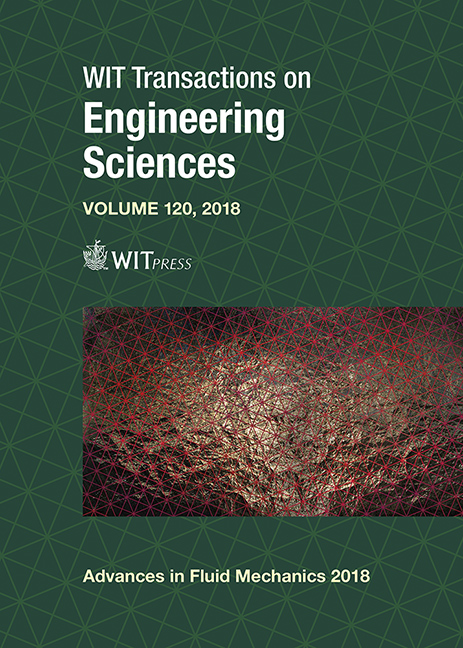DNS INVESTIGATION INTO THE EFFECT OF FREE-STREAM TURBULENCE ON HAIRPIN-VORTEX EVOLUTION
Price
Free (open access)
Transaction
Volume
120
Pages
11
Page Range
149 - 159
Published
2018
Size
920 kb
Paper DOI
10.2495/AFM180151
Copyright
WIT Press
Author(s)
KAZUO MATSUURA
Abstract
The effects of free-stream turbulence (FST) on the evolution of hairpin vortices during the process of laminar-turbulent transition are investigated by direct numerical simulation. The simulations are conducted for FST intensities of 0–6% and a free-stream Mach number of 0.5. FST changes the symmetry of the hairpin vortex, the arrangement of vortices inside the boundary layer, the location of high friction at the wall, and the scales of the vortices. The relationship between high-friction regions at the wall and hairpin vortices convected downstream is investigated by analyzing the computed flow fields. When FST is introduced along with inlet sinuous disturbances, asymmetric hairpin vortices and numerous secondary hairpin vortices, which are different from the case of no FST, are generated. The boundary-layer transition is characterized by an increase in skin-friction. As a result of vortex creation very close to the wall, high-friction regions are generated. To detect the vortex parts responsible for generating the high-friction regions, a new judgement algorithm for interior points is derived based on the Euler angle. The interior points of the near-wall vortices responsible for generating such high-friction regions are successfully visualized as a group of points in R3. The high-friction regions are the tips of hairpin legs and the regions of near-wall vortices induced beneath a hairpin packet. These regions often correspond to the periphery of the hairpin packets.
Keywords
hairpin vortex, boundary layer, laminar-turbulent transition, turbulence, direct numerical simulation, stability





